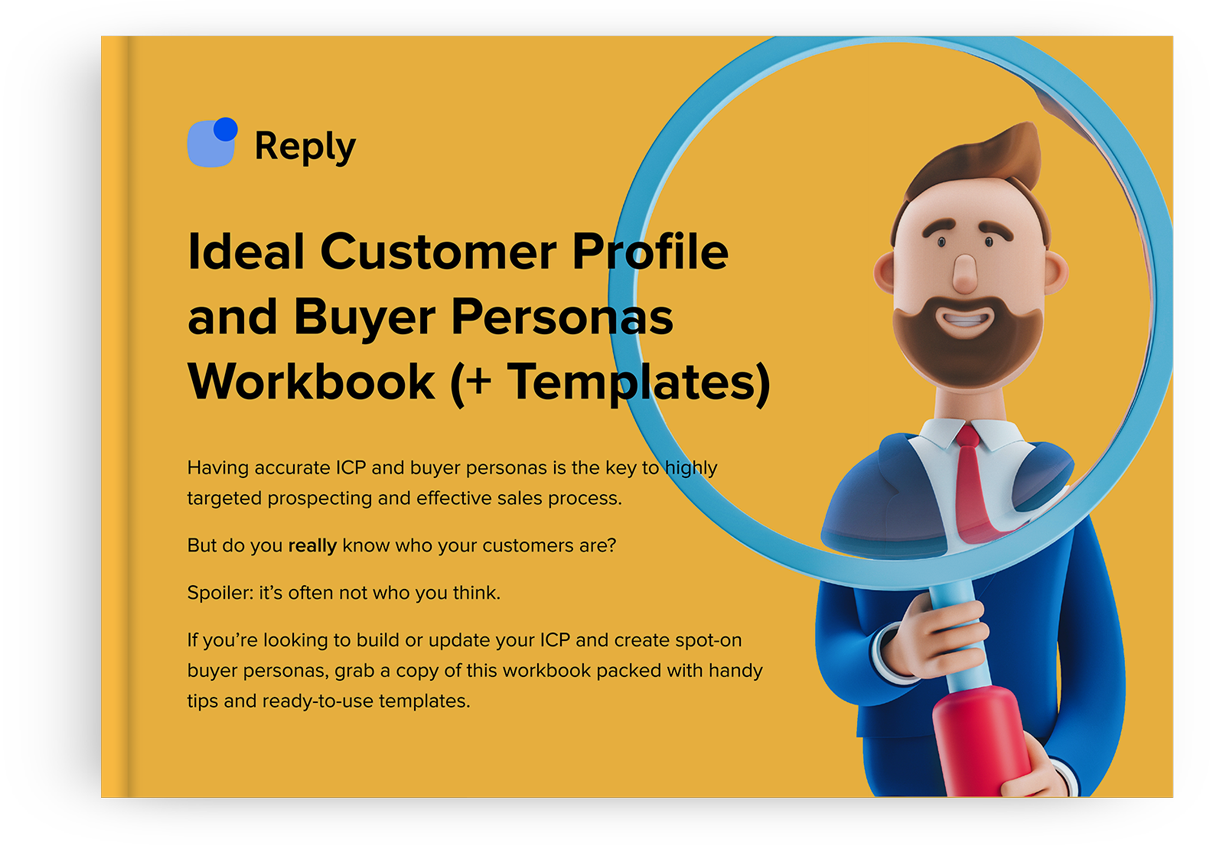Ready? Let’s hear it from the Experts…

Adele Revella
Adele Revella is the CEO and Founder of the Buyer Persona Institute and a leading authority on buyer personas. She is widely recognized as a marketing and business leadership speaker, consultant, blogger and workshop facilitator. Adele is also the author of the best selling book “Buyer Personas: How to gain insight into your customer’s expectations, align your marketing strategies and win more business.”
What are the biggest mistakes made when creating buyer personas?
Companies are building too many personas of dubious merit by adding a name and photo to obvious demographic data. The goal is to gain new insight into why, when and how customers like yours make the decisions you want to influence.
When buyer personas describe meaningful variations in your customer’s mindset and frustrations throughout their journey, you’ll know how to align your sales and marketing strategies to earn each persona’s business.

Tony Zambito
Tony Zambito is the founder and leading authority in buyer insights and buyer personas for B2B Marketing. In 2001, Tony established the first buyer insight and buyer persona development methodology designed specifically for B2B Marketing and Sales. This innovation has helped leading Fortune 100 companies gain a deeper understanding of their buyers resulting in improved customer strategies, customer experience, and revenue performance.
What are the biggest mistakes made when creating buyer personas?
The first mistake often made is to approach buyer personas as creation versus research. It is first and foremost a qualitative research endeavor, in which, the buyer personas are meant to be the communications to inform on the qualitative research and insights gathered.
Approaching buyer personas as role profiling versus understanding goal-directed behaviors that influence and drive buying decisions. Oftentimes, organizations approach buyer personas with a statement to the effect of “we need a persona for x role or buyer”.
Essentially what they get is a self-fulfilling prophecy — a profile of a role and a picture versus truly understanding goal-directed behaviors that influence purchase decisions. Buyer personas were originated as a means to understand goal-directed behaviors and decisions.
A focus on outdated sales and product management ideas and approaches contribute to developing a buyer persona that offers little value.
Many buyer personas, with inadequate research, are redundant outdated profile information that already exists in sales and product management. For example, publicly available or sales gathered information on initiatives, buying criteria, risks, and etc. tend to be redundant profiling information.

Katie Martell
Katie Martell creates buzz and drives demand as an on-demand marketing consultant based in Boston, MA. Previously the CMO and Co-Founder of marketing technology firm Cintell, she is an award-winning marketer and entrepreneur. She speaks at industry events including TEDx, B2B Forum, BMA, and has been featured in industry publications.
What are the biggest mistakes made when creating buyer personas?
When they’re created in a silo — when personas are not built as a collaborative effort between marketing, sales, and real customers, they tend to fail.
Correct personas require speaking with real buyers to understand them (not typically the kinds of questions you ask on a sales call), and collaboration between multiple perspectives within the business who have front-line interaction with buyers.
Too often, personas are created by a marketing team or agency in a closed conference room without any outside perspective, leading them to be wildly inaccurate and therefore unused.
When they are too shallow to be useful — while demographic segmentation may be an important part of organizing your lead database, the activity of persona development begs marketers to dig deeper into the needs/intent/motivations of buyers.
Buyer personas should seek to understand targets as humans, how they are going to make a buying decision, and what drives their actions at work. This goes beyond demographic information (e.g. CIO at large company).
Persona insights should be detailed enough to guide your team to what needs to be done to serve customers in a sales meeting or piece of marketing content.
When there is no top-down sponsorship — like any major transformation within a business, it’s got to start at the top. Executives must set the mandate for their teams that personas matter — using their names when referring to programs or decisions, incorporating them into company presentations, etc.
We talk a lot about the importance of being “customer-centric” but without top-level buy-in and senior executives walking this walk, it will end up as lip service.

Simon MacTaggart
Simon MacTaggart, Founder at Growth Copy — the strategically led, persuasive copy and content consultancy that specializes in helping fast-growth B2B and B2B2C tech companies with cold email campaigns, LinkedIn sales campaigns, webpage messaging and content creation. Simon is also the author of The Ultimate Cold Email Copy Mistakes Checklist.
What are the biggest mistakes made when creating buyer personas?
Considering the Reply audience is probably looking to use the collective wisdom from the expert post contributors here to help them create high converting email campaigns, I’ll keep my answers in the context of mistakes we typically see with clients creating and sending their own cold email campaigns;
Not developing a buyer persona before creating/sending a cold email campaign
Not creating enough buyer personas and then individual bespoke cold email campaign for each.

David Meerman Scott
David Meerman Scott, Online Marketing Strategist, and Author of several books on marketing, most notably The New Rules of Marketing and PR with over 350,000 copies in print in more than 25 languages.
What are the biggest mistakes made when creating buyer personas?
Making stuff up rather than actually interviewing buyers.
Interviewing customers rather than non-customers
Focusing on your products and services rather than buyer problems.

Jen Spencer
Jen Spencer, VP of Sales and Marketing, Allbound the partner sales acceleration tool.
What are the biggest mistakes made when creating buyer personas?
Don’t Be Afraid to Be Nimble — while developing your buyer personas is meant to serve as a roadmap of sorts for your sales and marketing teams, sometimes on a journey, it’s necessary to course-correct. At least once a year, reassess your buyer personas.
Are they still valid? Perhaps you’ve found that one of your four personas is not as relevant in your sales process as you had originally thought. Or, maybe a new product enhancement has opened up another persona opportunity.
It’s OK to Have Fun — buyer personas are internal pieces of research, so feel free to have some fun with them. Give them names like “Marketing Maddie” or “Tim the IT Manager”. Find stock photos of your personas and give them a face to go with that name.
Bring them up in conversation around the office and make them a regular part of your sales and marketing dialogue: “Our latest ebook was written with ‘Hannah the HR Manager’ in mind, so we’re going to promote it in the Society of Human Resource Manager’s LinkedIn group”.
Keep It Simple — it can be really tempting to make too many buyer personas. In fact, do you know how many buyer personas most organizations target? It’s typically 3-5. But beware — creating more than four or five buyer personas can undo all of your great strategy work.
With too many personas, you run the risk of being unable to delineate between them, and the whole idea of buyer personas is to provide you with focus. Start with one main buyer persona and then grow from there. For example, at Allbound, we have three buyer personas… for now.

Neil Davey
Neil Davey, Managing Editor at MyCustomer.com which is focused on tips for marketing, sales & service professionals to improve the customer journey and enhance customer experience.
What are the biggest mistakes made when creating buyer personas?
Not doing your research. Personas need to be grounded in reality. They are based on your real customers, and specifically your most important customers. Therefore, to accurately represent their behaviours, preferences, wants and needs, you need to commit time and effort into researching them. One key point here is to ensure that you don’t just get the view of a particular persona through the lens of one specific department. This will only provide an incomplete picture.
Therefore, you must involve all the departments and teams that have contact with the customer, so that the persona provides a holistic and accurate depiction of the customer.
Describing a personality and demographic, but not their motivations and behaviours. While it is useful to round out the persona with profile information, photos and quotes, the really valuable content will be the data that outlines their needs and goals (what they are trying to do, why and when), their motivations (what are their influences and thinking, and their triggers and barriers) and their behaviours (what channels do they use and are they spontaneous or meticulous in their research).
It is THAT information — rather than the personal info — that will provide the strongest steer from the personas.
Not refreshing personas. Buyer personas shouldn’t be enshrined forever. Business objectives, markets, products, services and customers will all change over time, so personas can become outdated.
Therefore it is worth returning to the personas on a regular basis to check that they haven’t become outmoded, and are still aligned with the company goals. Ensure that all appropriate teams are involved in this process, as they all need to agree that these personas are an accurate representation of the customer groups that they have contact with. As a rule of thumb, it’s a good idea to revisit personas as part of your annual business planning, though bear in mind that changes can occur at any time.

Aaron Agius
Aaron Agius is the Managing Director & Founder of Louder Online – One of the world’s leading digital agencies.
What are the biggest mistakes made when developing buyer personas?
Too many people make up the info about their buyer personas instead of basing it on real information gathered from interviewing current customers. These interviews need to happen, real data needs to be used so that the personas can be based on accurate information.
People tend to create as many personas as they can possibly think of instead of focusing only on their highest revenue generating personas. Focus on the few personas that generate the bulk of revenue for the business as those are the people you would want to keep targeting with content.
Not interviewing enough people to get as accurate a picture as possible. Too many persona developers will stop at just a handful of interviews and believe they have enough data.
The recommendation is to spend enough time to get as much data as possible so that your personas are developed on as many accurate data points as you can pull from the client interviews.

Sean Campbell
Sean Campbell, CEO of Cascade Insights — a competitive intelligence and market research firm for B2B technology companies.
What are the biggest mistakes made when creating buyer personas?
Business Challenges and Industry Alignment — first, it’s important to learn which business challenges the buyers believe are the most unique to their industry. These challenges are a goldmine.
They will help you tailor your product. They will help you tailor your marketing. They will help you tailor your sales efforts. Your buyer personas need to focus on these jobs in detail.
Self-Education — another key area to probe is how these buyers self-educate. For example, if they were to search for your product or solution on the Internet, what would they search for?
You might find them stating certain questions or problems they have and this will lead you to long tail keywords that you can focus on in your SEO work and marketing efforts.
Who Gets on the Short List? Then you want to dig into how folks generate an initial list of potential vendors. How do they go about the process of generating that short list?
That might be a mixture of referral and outside resources, but you want to make sure you fully understand how vendors arrive on that short list.

Brandon Gains
Brandon Gains is the VP of Marketing at Referral SaaSquatch – Leading provider of referral customer program software.
What are the biggest mistakes made when creating buyer personas?
Including buyer demographics — we start creating buyer personas with the best of intentions, mapping out pain points and key concerns from customer interviews. Unfortunately we don’t continue down that path of buyer decision modeling and start filling out their profiles with demographic stats that don’t help the process.
For example adding in gender, family size, location, etc. instead of mapping how they evaluate products and services, internal and external goals of their role, etc.
Filling the funnel — persona exercises should help you change your approach to marketing and demand generation — not help you buy another lead list. They should surface insight to refine your sales enablement, content development and media buying content.
Minimal customer research — we have a tendency to create personas based off of our gut feeling instead of doing the work to set up actual customer interviews and internal discussions across sales, customer success, product and marketing departments.
Which damages the strategic value of a buyer persona project in the first place and you won’t get the departmental buy-in across your organization that you’re looking for.

Justin Gray
Justin Gray, is the Founder and CEO of LeadMD – The Marketing Automation Experts.
What are the biggest mistakes made when creating buyer personas?
The most common, and also most critical, mistakes we see when marketers create buyer personas is simply aiming too low in terms of what a persona truly means. Often times, the desire for categorization stays too high level. Job titles and industry verticals are the most common lenses through which marketers view personas.
Although these descriptors are elements of a persona, they certainly aren’t the end-all be-all. Instead, marketers need to go deeper into the personalities and primary trust drivers within their buyers.
We term these dimensions “psychographics” and they play a critical role in understanding how buyers make decisions and form relationships.[br]
Once you begin to look at your buyers in terms of their psychological frame of mind, you will see the same trends arise in terms of summary groupings yet these deeper dimensions have a much greater impact on messaging.
Once we begin to understand the “how” and “why” of buyer decision-making, we can assemble content they identify with on a much deeper level.

Theo Romeo
Theo Romeo is the Creative Director at Intelligent Demand – The agency partner that focuses on growing client revenue.
What are the biggest mistakes made when creating buyer personas?
Failing to validate draft personas using real-world data. In the interest of moving quickly, many marketers invest a ton of time in the internal brainstorming of personas, but they don’t spend nearly enough effort validating their ideas.
If you have no evidence or data to support your hypotheses around the titles, characteristics, channels, etc. of your personas, then you’re simply playing a very expensive guessing game.
Trying to answer too many questions about your persona: hair color, first kiss, favorite Bond actor… I’m kidding about those examples, but they are about as relevant as some of the other bulleted lists I’ve seen in persona profiles.
Just stick to what’s actionable in your messaging. Ideally, everything we do as marketers in the strategy phase should be driven by variables we can affect, measure and optimize during execution. Everything else is fluff.
Shallow insights. Tell me if this sounds familiar. The emotional drivers for this persona are:
- Wants to be a hero at her job;
- Wants a promotion;
- Looking for ways to become more efficient;
- Wants respect from peers.
Thanks for that. Now I know this persona is a human. There’s not much I can action on that would be the least bit differentiating. At a high-enough level, every company is selling solutions that help their customers do more with less, achieve greater efficiency, and grow the company.
Similarly, those companies are targeting someone who wants to be a hero. There’s nothing remotely unique about either. You have to dig way deeper.
In summation.
Why do we even waste our time with personas? It’s not so we can address every want, need, and fear and convince someone in a single piece of content to believe that this product or service will change their lives. If that was the job, we’d fail every day. No, what we’re after is actually much simpler, in theory.
We are trying to get someone’s attention and keep it. That’s it. Marketing doesn’t get ink on the contract; sales does. If we can meet a prospect where she’s at emotionally, she may pay attention long enough and engage deep enough that a salesperson has a slightly easier time gaining her trust.
So find ways to connect. Find topics your audience care about.
Test, learn, optimize, and do it all over again.
![Creating Buyer Personas: The Biggest Mistakes [Expert Interviews] Creating Buyer Personas: The Biggest Mistakes [Expert Interviews]](https://reply.io/wp-content/uploads/bpersona-3-1-1080x608.png)





















